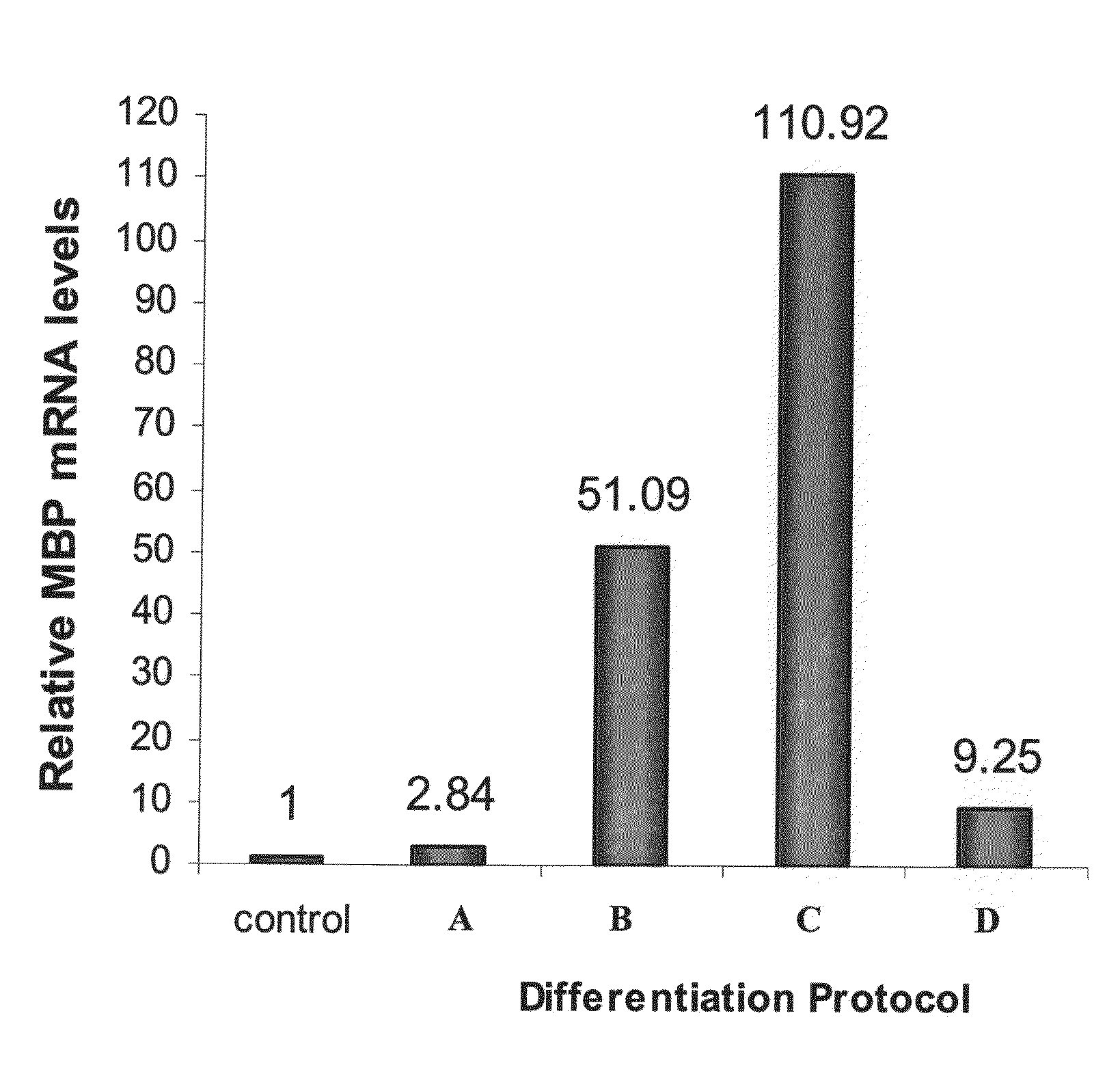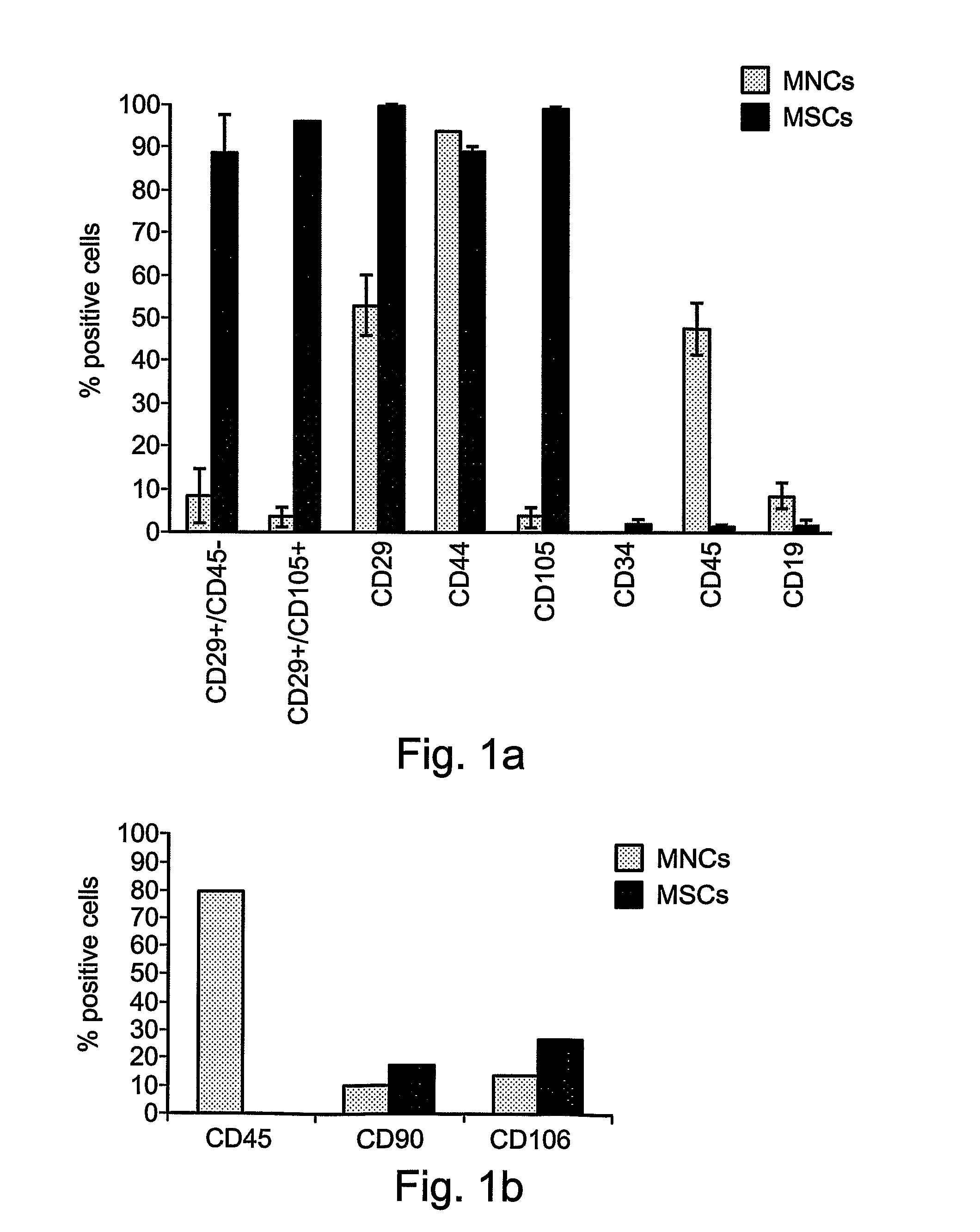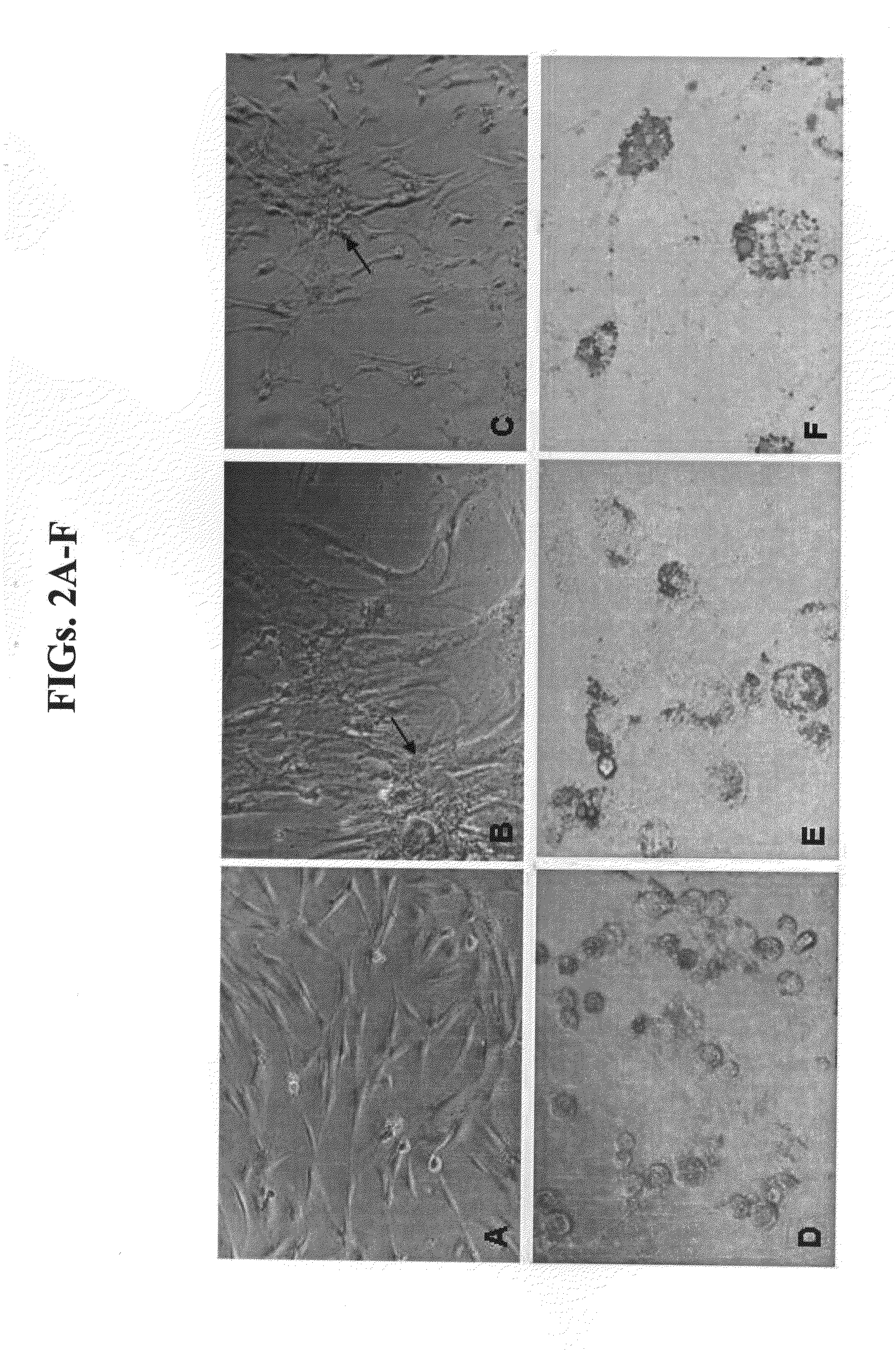Isolated Oligodendrocyte-Like Cells and Populations Comprising Same for the Treatment of CNS Diseases
a technology of oligodendrocytes and cns diseases, which is applied in the direction of bone marrow stroma cells, skeletal/connective tissue cells, nerve system cells, etc., can solve the problems of devastating neurological consequences, unable to obtain large numbers of myelinating cells for transplantation, and significant slowdown of nerve impulse propagation
- Summary
- Abstract
- Description
- Claims
- Application Information
AI Technical Summary
Benefits of technology
Problems solved by technology
Method used
Image
Examples
example 1
Characterization of MSCs
[0209]Results
[0210]Bone marrow derived plastic adherent cells were characterized by flow cytometry (FACS), and their cell surface marker expression profile was compared with that of total bone marrow derived mononuclear cell (MNC) populations isolated by centrifugation through a density gradient (FIGS. 1A-B).
[0211]Briefly, following at least two weeks in vitro the majority of the plastic-adherent population consisted of cells presenting a stable profile of typical mesenchymal surface markers CD105+, CD29+ and CD44+ and a definite majority of the cells were negative for CD34−, CD45− and CD19−, which are typically negative in MSCs, and characterize other cell types such as hematopoietic cells. Double staining with the mesenchymal CD29 and hematopoietic CD45 or with the mesenchymal CD29 and CD105, were performed as well, and over 88% of the plastic adherent cells showed a mesenchymal pattern of surface marker expression (i.e. were negative for the hematopoietic ...
example 2
Differentiation of Mouse MSCs to Oligodendrocyte-Like Cells
[0218]Materials and Methods
[0219]Isolation of mouse MSCs: Mice were sacrificed in a CO2 chamber and the skin was cleaned in the area of the incisions (hips and legs) using 70% ethanol solution. Sterile scissors were used to isolate the tibias and femurs, and remove muscles and blood vessels. The isolated tibias and femurs were placed in HBSS, and the marrow was removed by insertion of a sterile syringe (1 mL) with a 25-gage needle filled with 0.5 mL sterile HBSS into the bone marrow and flushing out the marrow. Cells were disaggregated by gentle pipetting several times until a milky homogenous single-cell suspension was achieved. Bone marrow aspirates were diluted and washed by adding 5 ml fresh HBSS and centrifugation at 1000×g, for 20 min at room temperature (RT). The supernatant was removed, and the cell pellet was re-suspended in 1 ml growth medium (see below in Cell Culture Conditions) and diluted to 10 ml. The cells we...
example 3
Differentiation of Human MSCs to Oligodendrocyte-Like Cells
[0229]Materials and Methods
[0230]Isolation of human MSCs: The study was approved by the Helsinki ethical committee of the Israeli Ministry of Health and Tel-Aviv University, and individual informed consent was obtained from donors. Bone marrow aspirates (10 ml) were obtained from iliac crests of human donors (age range 19-76 years old). No significant differences between the samples were detected. The aspirates were diluted 1:1 in 10 ml of Hank's balanced salt solution (HBSS; Biological Industries http: / / www.bioind.com). Using a Pasteur pipette a quarter volume Ficoll solution (1.077 g / ml) was added underneath the bone marrow sample. Mononuclear cells were isolated by centrifugation at 2500×g for 30 min at room temperature through the Ficoll density gradient (Histopaque®-1077; Sigma). The mononuclear cell layer was recovered from the gradient interface by Pasteur pipette, washed with HBSS and centrifuged at 2000×g for 20 min...
PUM
 Login to View More
Login to View More Abstract
Description
Claims
Application Information
 Login to View More
Login to View More - R&D
- Intellectual Property
- Life Sciences
- Materials
- Tech Scout
- Unparalleled Data Quality
- Higher Quality Content
- 60% Fewer Hallucinations
Browse by: Latest US Patents, China's latest patents, Technical Efficacy Thesaurus, Application Domain, Technology Topic, Popular Technical Reports.
© 2025 PatSnap. All rights reserved.Legal|Privacy policy|Modern Slavery Act Transparency Statement|Sitemap|About US| Contact US: help@patsnap.com



